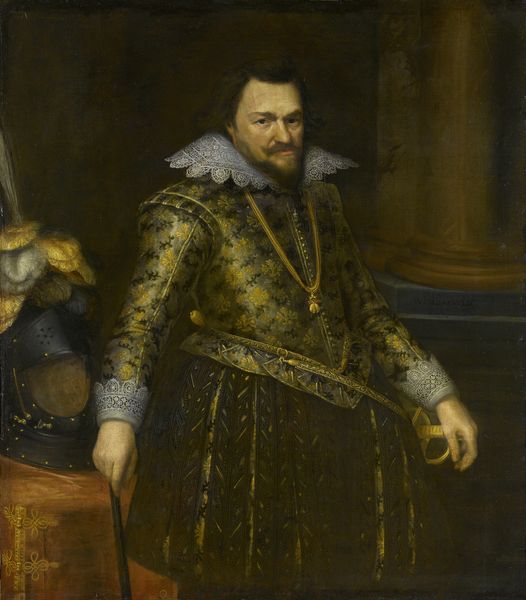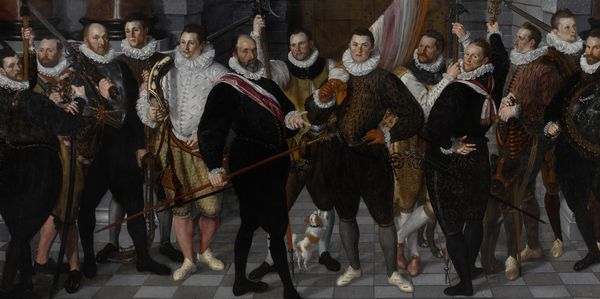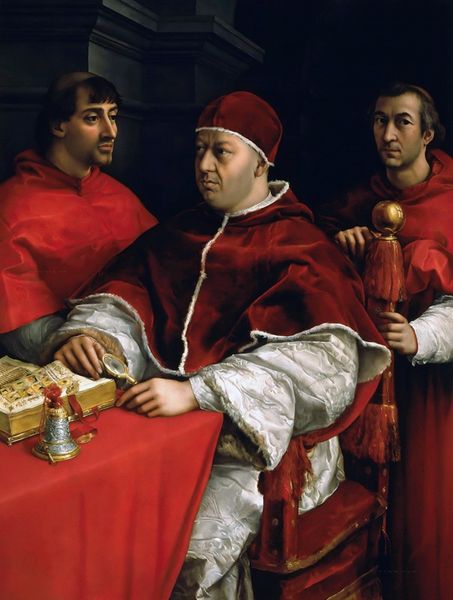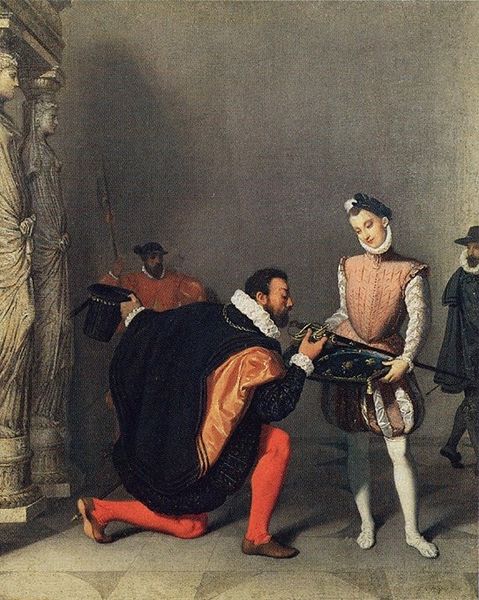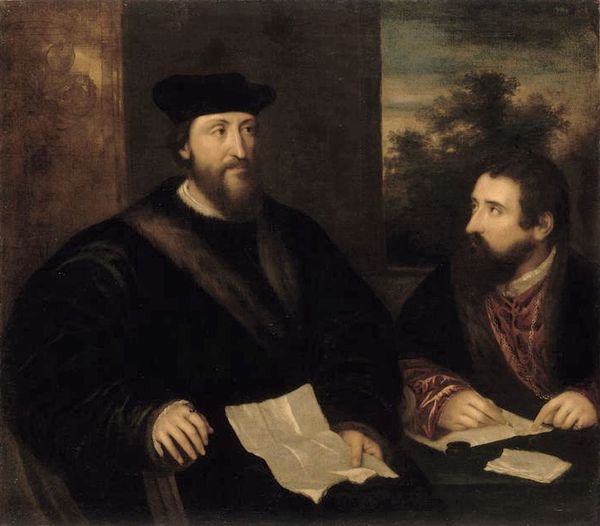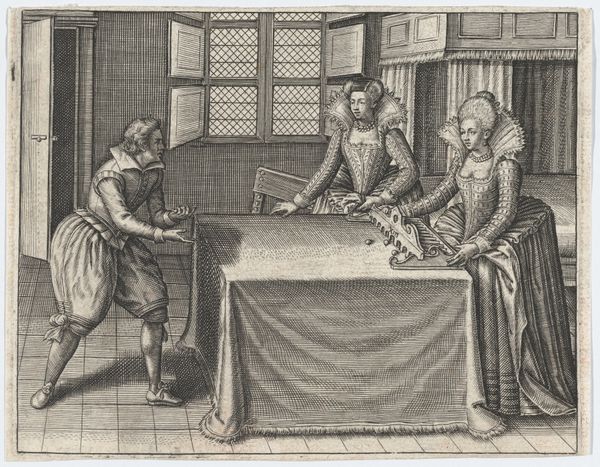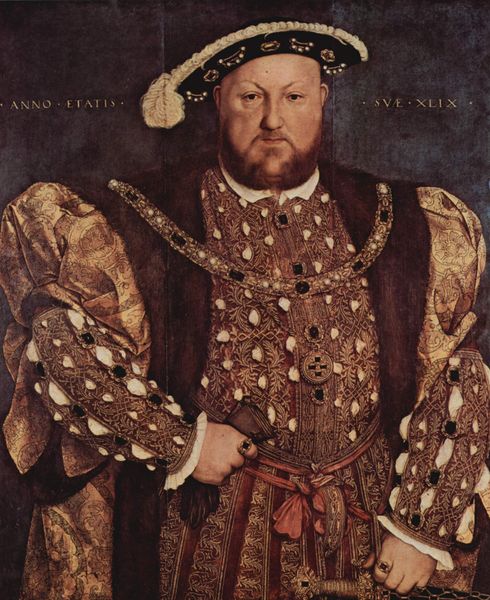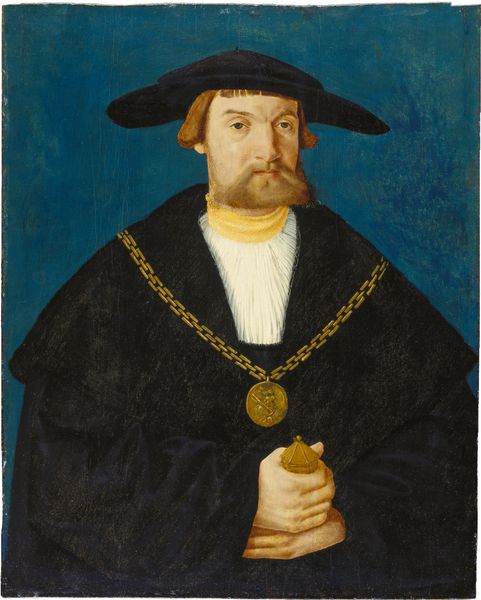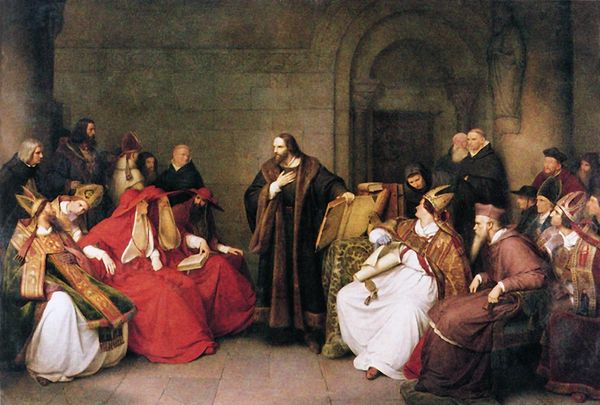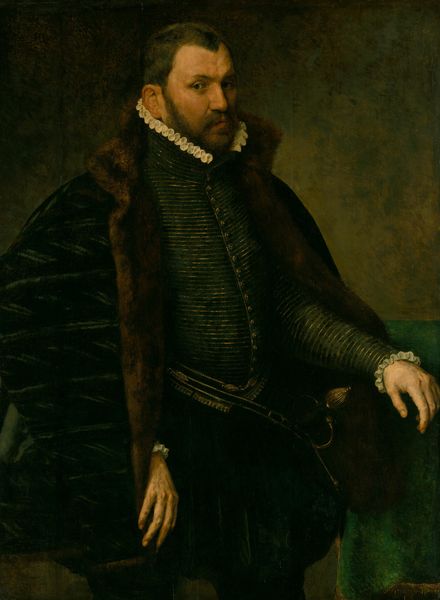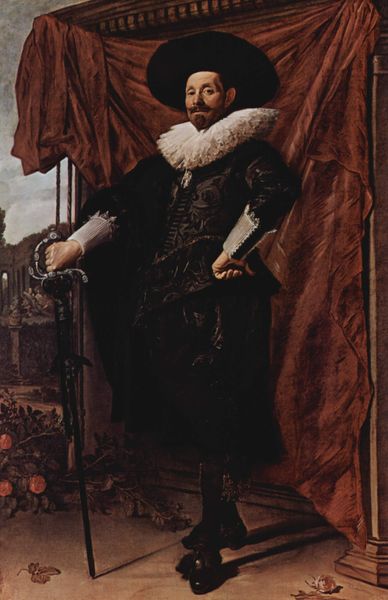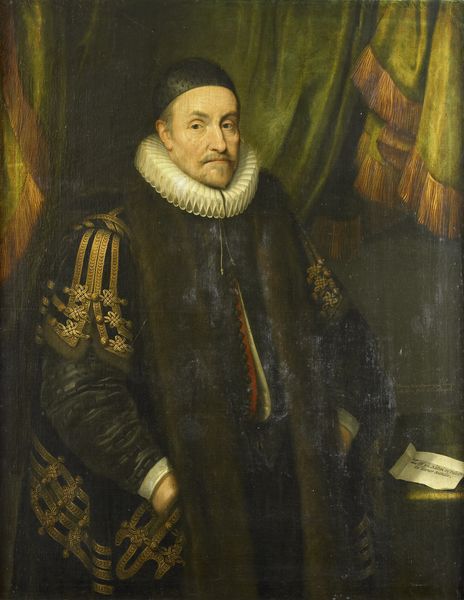
painting, oil-paint
#
portrait
#
painting
#
oil-paint
#
11_renaissance
#
male-portraits
#
costume
#
group-portraits
#
genre-painting
#
history-painting
#
northern-renaissance
Dimensions: 209.5 x 207 cm
Copyright: Public domain
Hans Holbein the Younger’s oil painting ‘The Ambassadors’ (1533) is among the most recognised paintings in The National Gallery. Why is this? At first glance, the painting appears fairly ordinary. The double portrait depicts the French ambassador Jean de Dinteville (left) and the Catholic bishop, George de Selve (right). In typical Tudor fashion, the work communicates an imposing sense of power and grandeur. Take a look at the luxurious fabrics here rendered by Holbein. Lucious pink silk, swathes of rich emerald velvet, and white fur all exemplify wealth and opulence. Clearly, these two men are significant and influential figures in the political and religious realms. ⚜️ The work also incorporates the still life genre. The items arranged on the background table have been carefully selected for their symbolic associations. Do any objects stand out to you? The two globes connote the ambassadors’ influence in international relations, while the lute features broken strings. This may signify the social turbulence and divisions of the 1530s, during the period of English Reformation. Around this time, Henry VIII broke away from Roman Catholicism and officially established the Church of England. Holbein intelligently hints at this religious tension through the inclusion of Protestant hymnbooks. ⛪️ One particular aspect of the painting, however, can be said to be unexpected. A strangely distorted skull extends across the foreground, disturbing the otherwise realistic composition. The large skull is a famous example of anamorphism, a technique used to project an object to be seen from a specific angle. In this case, the skull appears head-on when the painting is viewed from the side. The artist has precisely constructed the skull using advanced mathematical perspective. 📐 So, why has Holbein included such a strange image into this painting? Most scholars agree that the motif is a symbol of vanitas – a reminder to the viewer of their own mortality, and the fleeting nature of life. ‘The Ambassadors’, then, is far removed from a regular portrait. It forces the viewer to contemplate the inevitability of death, and the constant changes which characterise the human condition. 💀 Editor: Lucy Jude Grantham
Comments
No comments
Be the first to comment and join the conversation on the ultimate creative platform.
